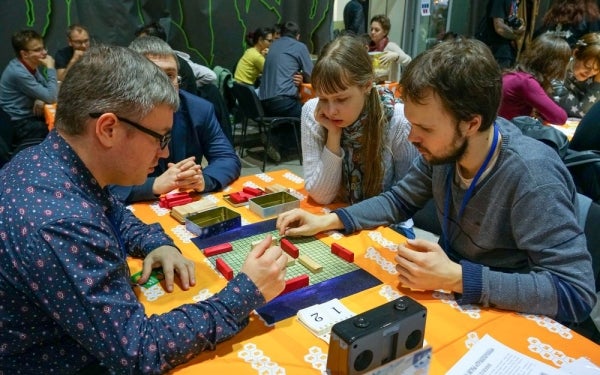Inclusive Engagement Techniques and Approaches
Game-based Approaches

What is it?
Game-based approaches integrate game-like elements, such as challenges and competition, into public outreach and engagement efforts to increase participation by making public engagement more interactive, enjoyable and repeatable.
Game-based approaches may take multiple forms, including in-person activities (e.g., board games, card games, puzzles) or virtual experiences (e.g., mobile applications, online simulations, digital leaderboards).
When to use it
Game-based approaches can help foster learning and information retention. These approaches can help engage youth and are particularly valuable for longer duration projects where continued awareness and involvement is important.
How to do it
Before
- Design activities and select game platforms that accommodate different awareness and digital access levels. Activities could include:
- Online, mobile or video games that may provide information about project topics.
- Scavenger hunts where participants find items or places related to the project.
- Puzzles that can inform about a project.
- Challenges or tasks for participants to complete.
- Choose any game incentives.
- Options include points, badges, leaderboards, social media recognition, certificates or prizes.
- Conduct outreach to invite and encourage participation, such as using email notifications, flyers or social media.
- In addition to standard outreach channels, directly contact organizations and people that may be particularly interested in the project/topic.
During
- Encourage competition or collaboration by using team-based challenges or personal progress tracking.
- Consider making participation visible with display leaderboards, progress bars or community goal tracking to show collective impact.
- As participants complete activities, consider providing game incentives.
After
- Optionally allow participants to share feedback about the engagement event through participant satisfaction surveys.
- Recognize any top scoring participants and share any next steps or future opportunities for participation.
Resource considerations
![]()
Cost: Minimal to Moderate
Game-based approaches can range from simple, free activities to moderate costs for platforms with built-in game mechanics.
![]()
Time: Moderate
Developing game-based approaches requires planning, testing and refining mechanics before launch. This may take a few months.
![]()
Capacity: Minimal
One to two staff may be needed to create a platform, monitor participation and track engagement outcomes.
How to make it more inclusive
- Identify any language access needs in advance.
- Use mobile-friendly platforms to broaden participation while considering digital access levels.
Examples of game-based approaches in action
- Boston Community PlanIt - A digital game where community members earn points by discussing city planning issues.
- Hawaii Digital Government Gamification – Community members state-wide earn badges and track their contributions (e.g., saving time, paper and mileage) when accessing government services.
- Alaska Division of Elections RankedVote - Educating voters on ranked choice voting by hosting interactive contests, including an “I Voted” sticker design competition.
Inclusive Engagement Techniques and Approaches
- Introduction
- Appreciative Inquiry
- Arts-based Engagement
- Briefings
- Comment Forms
- Community Cafés
- Community Mapping
- Community Office Hours
- Email Notifications
- Engagement through Service
- Fact Sheets
- Flyers
- Focus Groups
- Game-based Approaches
- Hotlines
- Information Kiosks
- Interviews
- Meeting in a Box
- Mobile Engagement
- News Releases
- Newsletters
- Open Houses
- Participation Support
- Pop-Up Events
- Project Models
- Project-specific Groups
- Public Meetings
- Public Service Announcements (PSAs)
- Social Media
- Surveys and Polls
- Tours and Field Trips
- TV/Radio/Podcast Interviews
- Vision Walls
- Web-Based/Hybrid Meetings
- Webpages
- Workshops


 Inclusive Public Engagement Guide
Inclusive Public Engagement Guide